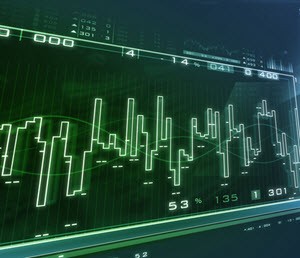Modern forex trading can seem strange and chaotic at a first glance. By looking at the history and early development of forex trading, it becomes easier to understand the basic mechanism behind this market and why it originated in the first place.
 One of the earliest known examples of professional forex trading is from the Mediterranean region, where professional forex traders were active as early as antiquity. International trade flourished during the antique, forming a need for large-scale forex trading. Examples of well-known currencies were Greek coins, Roman coins and Egyptian coins. In Jerusalem, professional forex traders where called kollybistẻs. During weekdays, they had their own shops throughout the city. During days of religious celebrations, they would flock to the Court of the Gentiles, a bazaar located near the Second Temple in Jerusalem.
One of the earliest known examples of professional forex trading is from the Mediterranean region, where professional forex traders were active as early as antiquity. International trade flourished during the antique, forming a need for large-scale forex trading. Examples of well-known currencies were Greek coins, Roman coins and Egyptian coins. In Jerusalem, professional forex traders where called kollybistẻs. During weekdays, they had their own shops throughout the city. During days of religious celebrations, they would flock to the Court of the Gentiles, a bazaar located near the Second Temple in Jerusalem.
As the Roman empire declined and split, international trade withered but never came to a halt. Constantinople rose as a center for international trade, partly thanks to its strategical location where Europe meets Asia between the Mediterranean and the Black Sea. In the 5th century A.D, the government of Byzantium enforced a state monopoly on the lucrative forex trading in Constantinople. It should also be noted that the Byzantine currency, the golden solidus introduced by emperor Constantine, became one of the most highly regarded and stable currencies, and not just within the realm of Byzantium.
As the “Dark Ages” had given way to the Renaissances in Europe, the powerful Medici family opened several banks throughout Europe in the 15th century. These banks allowed them to carry out a highly profitable forex trade from their base in Florence. One of the strongest forces behind the Medici forex trade was the need for textile merchant to convert their pay into various currencies.
During the 17th and 18th century, the Netherlands was a powerful kingdom with Amsterdam as its center. Dutch merchants sailed to Asia, Africa, and the New World to ply their trade, and Amsterdam turned into a powerhouse of forex trading.
The 19th century saw the introduction of a gold standard in several countries, both in Europe and over seas and this had a huge impact on the forex trade. A legal gold standard was implemented in Great Britain in 1821 with the introduction of the Gold Sovereign, and this also had an effect in Australia, New Zealand and the British West Indies. The United Province of Canada implemented their gold standard in 1853, followed by countries such as the United States, Germany, Sweden and Denmark in 1873.
At the earliest years of the 20th century, the global forex trade was dominated by traders based in Paris, Berlin and New York. Eventually, London also grew into an important hub for the currency trade. Statistics from 1913 show that nearly 50 percent of the world’s forex trade involved the British pound sterling.
